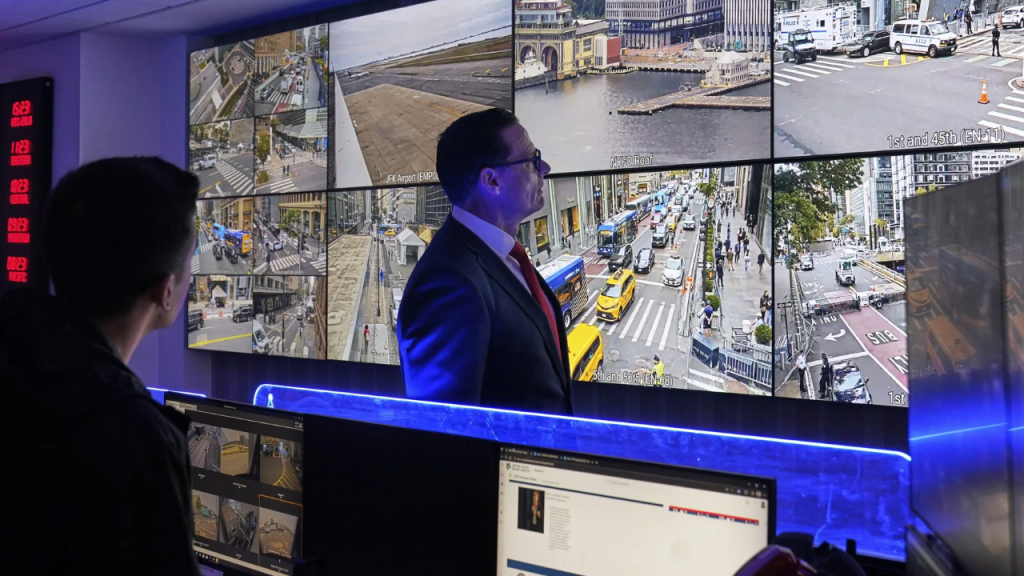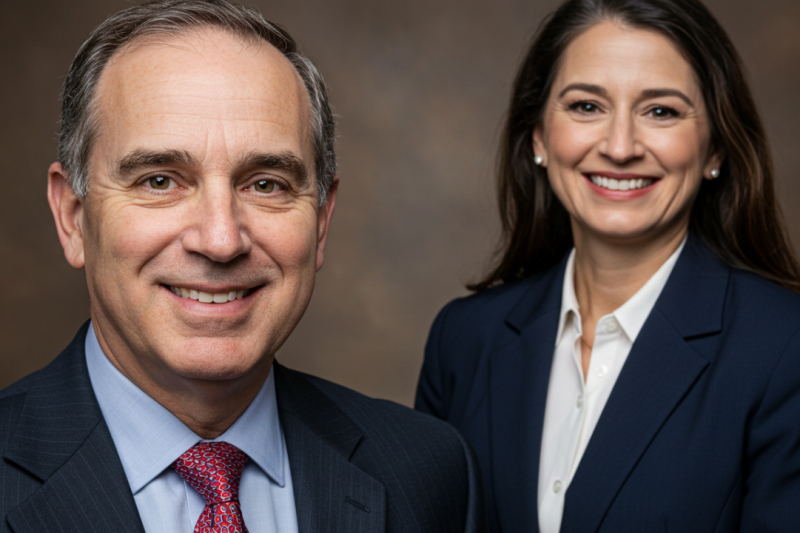NEW YORK — As world leaders filled hotels and clogged midtown Manhattan, Secret Service agents quietly dismantled one of the most sweeping communications threats ever found on U.S. soil. The agents discovered a cache of 300 servers packed with 100,000 SIM cards able to disable cell towers, jam 911 calls and flood networks with chaos at will.
Cell Tower Disruption
A day before world leaders filled Manhattan hotels and motorcades clogged the streets, Secret Service agents dismantled a massive hidden network that could have shut down cell towers as they gathered for United Nations meetings. The agency said it found 300 SIM servers containing 100,000 SIM cards spread across five sites near New York City. The network had the potential to send 30 million text messages per minute and launch distributed denial-of-service attacks that would block emergency dispatch communications like EMS and police.
Secret Service Director Sean Curran called the discovery “a significant and potentially devastating threat.” The SIM equipment — which was discovered within 35 miles of the UN — is capable of crippling the US cellular network and disrupting essential services, CBS News reports. According to an agency statement, the devices were seized from SIM farms in abandoned apartment buildings and other sites throughout the New York tristate area. They were allegedly used to anonymously convey assassination threats against government officials and for criminal activity, including the sale of fake IDs and the transmission of illicit drug information.
The investigation was launched after a series of telecommunications-related imminent threats against the agency’s protectees this spring, the Secret Service says. Agents uncovered the hidden network in the course of investigating those threats and discovered additional suspicious activities at other cell towers, the agency says.
Cell phone towers are a critical piece of the national telecommunications infrastructure and are often located in high-traffic areas and on government buildings or utility poles, where they provide services to thousands of people. Attacks on cell towers can cause significant disruptions and may be used to interfere with telecommunications and public safety services, as well as for commercial data breaches and financial fraud.
In 2019, the Secret Service revealed that hackers were able to gain unauthorized access to cell towers and exploit vulnerabilities in 5G technology, causing disruption of services for millions of Americans and exposing customer data. The Secret Service warns that the use of unauthorized access tools by cybercriminals to target critical infrastructure such as cell towers and other wireless communication systems is a growing and evolving risk to our nation’s security.

911 Call Jamming
Just as world leaders gathered for the United Nations General Assembly, Secret Service agents dismantled a massive hidden telecom threat across New York City. Investigators uncovered a trove of devices that could have crippled cell towers, jammed 911 calls and flooded networks with chaos at the very moment they were most vulnerable. The discovery, which included more than 300 SIM servers packed with 100,000 SIM cards clustered within 35 miles of the UN, is one of the most sweeping communications threats ever uncovered on US soil.
The trove was found as part of a protective intelligence investigation into a series of telecommunications-related threats targeting senior government officials. Authorities say the cellular communication devices, which were scattered across multiple sites, functioned like banks of mock cellphones capable of generating mass calls and texts, flooding local networks and masking encrypted communications between threat actors and criminal organizations. The Secret Service says it hasn’t uncovered any direct connection between the threat and the U.N. gathering and that there are no active plots to disrupt the meeting. But it warns that the takedown highlights a new frontier of risk: threats that target the invisible infrastructure that keeps modern cities connected.
Signal jammers are illegal to own and operate without a permit in most jurisdictions, and they can impact everything from personal mobile phones to GPS navigation systems. They’re especially dangerous for first responders, who rely on wireless communication to coordinate and communicate with each other during emergencies. The federal government has established a dedicated team to work with public safety agencies and others to raise awareness of jamming risks, develop and test mitigation technologies, and support training for first responders.
It’s not clear how the telecommunications threats uncovered by Secret Service investigators were able to interfere with emergency services, but their location near the UN suggests they were designed to be used during high-profile events in densely populated areas. While the agency says it hasn’t uncovered any specific plans to disrupt the UN meeting, it’s urging other cities to prepare for potential attacks. It’s also encouraging the private sector to bolster their defenses against these threats by helping them identify, report and mitigate them.
Emergency Services Disruption
After the number of telecommunications-related imminent threats against senior government officials grew this spring, the Secret Service seized and dismantled a sprawling telecommunications network. In five locations within 35 miles of New York City, agents found 300 SIM servers containing more than 100,000 SIM cards that were capable of sending 30 million text messages per minute. They could also disable cell towers, launch distributed denial of service attacks and mask encrypted communication between potential threat actors and criminal enterprises.
Investigators warn the system could have crippled cellular service in a metropolis that relies on it for everything from daily business to counterterrorism and emergency response. Its takedown came as foreign leaders filled hotels in Midtown and motorcades clogged Manhattan, just days before President Trump is scheduled to address the U.N. General Assembly.
Agents are now scouring every call, text and search of those SIM cards to figure out who was behind the network. They are also examining the equipment itself, which included computers, cellphones and illegal firearms. “We are making sure that all of the information on these devices is reviewed, so we can find out who was involved,” McCool said.
Terrorist Attack
While more than 150 world leaders gathered in New York to discuss international affairs, the Secret Service quietly dismantled a massive hidden telecom network across the New York area. The system could have crippled cell towers, jammed 911 calls and flooded networks with chaos at the very moment the city was most vulnerable. Officials say the takedown highlights a new frontier of risk.
The Secret Service discovered the network after a series of telecommunications-related threats directed toward senior government officials. The agency began a protective intelligence investigation and identified more than 300 co-located SIM servers and 100,000 SIM cards spread throughout the tri-state area. They were concentrated within 35 miles of the U.N. General Assembly meeting. The servers could have blacked out cellular coverage, launched denial of service attacks and mask encrypted communications between potential nation-state threat actors and criminals.
Investigators found the devices at five locations within 35 miles of the UN headquarters, according to NBC News. They were used to anonymously convey assassination threats and to facilitate criminal activity. The devices were also capable of disabling cell phone towers and launching distributed denial-of-service attacks that would have disabled critical infrastructure like police, EMS and fire dispatch, authorities said.
The equipment was seized by agents from the Secret Service, the Department of Homeland Security and the Office of the Director of National Intelligence. The agents worked through every call, text and search made on those SIM cards to determine who created the network and if it was intended to target specific individuals or simply disrupt telecommunications.
Despite the fact that the devices were not tied to a direct threat targeting the United Nations General Assembly, the Secret Service moved quickly to shut down the network, given its timing and proximity. Officials say the discovery demonstrates that a major terrorist attack no longer has to involve bombs or cyberattacks but can be as simple as hijacking the systems modern cities depend on.
Secret Service Director Sean Curran said the discovery underscores the importance of the agency’s mission to prevent a threat before it happens. “We will not allow anyone to jeopardize the safety of our protectees or any other person in our country,” he wrote. “Early analysis indicates the devices were intended to interfere with telecommunications, and this investigation makes it clear that imminent threats to our protectees will be immediately investigated, tracked and disrupted.”



